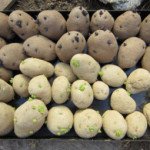February Garden Tips
Keep in mind that the average last freeze for North Texas area is not until mid-March. Even so, many plants normally begin to show signs of growth in February, which makes it the perfect time, to get outside and work in the yard. Here are a few February garden tips you can work on.
Pruning is both an art and a necessary maintenance function. Most trees and shrubs can be lightly pruned at any time; however, mid-winter is generally the best time for major pruning.
Summer flowering trees and shrubs should be pruned before buds begin to swell for Spring, generally, they bloom on new growth; examples are crape myrtle, butterfly bush, spiraea, and honeysuckle. If those seed heads on crepe myrtles bother you, remove them this month. Just clip back the ends of the branches, do not destroy the beauty of the gracefully sculptured trunks by severe pruning. Please never top a crape myrtle. Spring flowering plants such as azalea, Carolina jessamine, wisteria, forsythia, and quince should not be pruned until after the blooms are spent.
February is the best time for pruning most roses. Remove any old and diseased canes then cut the remaining canes back by 50%. Make your cuts above a bud that faces away from the center of the plant.
Early to mid-February marks the time to apply a pre-emergent herbicide for lawns. These products kill germinating seed. A second application may be needed in late May or early June. Remember that the best defense against lawn weeds is a healthy, thick turf resulting from good management.
 Trim back perennials and ornamental grasses before the new growth appears in Spring. Clean up around plants and mulch well to protect.
Trim back perennials and ornamental grasses before the new growth appears in Spring. Clean up around plants and mulch well to protect.
Thinking about a spring garden? Look for onion sets and seed potatoes, they arrive early. By planting early, plants will be off to a better start and can become adjusted before the stresses of summer arrive.
Have questions? Contact us here.